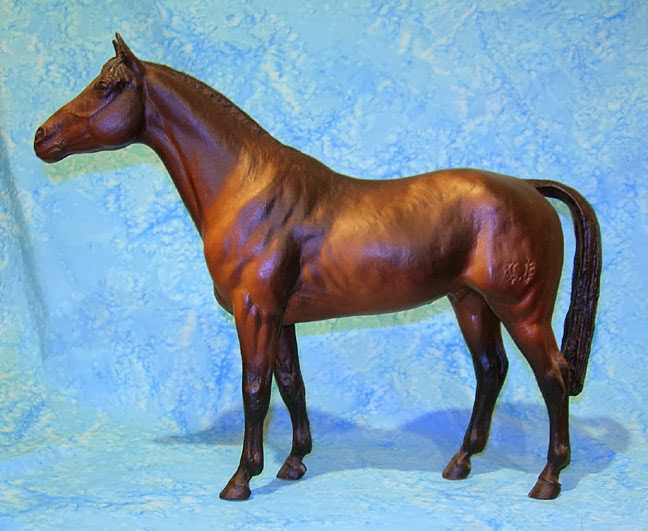I’ll tackle the sticker part first.
The sticker was probably altered for a couple of reasons. Tenite is the brand name of the Cellulose Acetate manufactured by the Eastman Chemical Company. What brands of plastics, and when they were used, is not something I’ve tracked much at all. If Reeves is using other brands of Cellulose Acetate, using the brand name from another company may not be appropriate.
(BTW, different brands of Cellulose Acetate are basically the same, with some minor chemical differences - sort of the way all chocolate chip cookies recipes are nearly, though not absolutely identical. You’d still want to avoid mixing different recipes together because the results might be a little unpredictable, depending on the blend.)
Also, by making the sticker somewhat different from the originals, it removes the temptation to transfer the sticker to someone else.
As far as the Chalky points go, that’s a Vintage feature - most notably seen on releases such as #27 TV’s Fury and the late 1950s version of the Black Beauty Western Horse and Pony.
It seems a little odd to include in a rereleased version of the Appaloosa Mustang’s paint job, especially since I can’t recall ever seeing any Chalky Appaloosa Mustangs.
The first theory that pops into my mind is that it was done to minimize unscrupulous people in the near or distant future from claiming the items as true 1960s vintage.
There may well be some actual vintage Belgians floating around in this color. I don’t know of any, personally, but enough oddball discoveries have been made in recent years that I’m not willing to discount the possibility. (Remember the Gloss Gray Appaloosa Quarter Horse Gelding?)
As I’ve all hammered into your heads, there’s still tons of stuff we don’t - and probably will never - know about the early history of Breyer. Vintage Glossy Chalkies are scarce enough that making that addition to a new Vintage-style release at least seems like a safe bet.
There was one instance of Reeves releasing a Vintage-style item that turned out to have been released before. Though we’re still not sure whether its status was a Test Color, a microscopic Special Run or exceedingly brief Regular Run: the Charcoal Five-Gaiter.
Reeves probably didn’t know about it when they released Rhett in 2001, and I was only familiar with it because I had met the then-only-one-known Vintage Charcoal at a local live show. At the time I assumed he was merely a Test, until another turned up on eBay, which made me think there might be more to his story than that.
A much less elaborate explanation (and thus, more likely) could be this: they liked the way it looked. That was pretty much the explanation they gave us for the Red Bay coloring on the original Traditional Sham, when we protested.
The lack of eyewhites on my Levi doesn’t bother me one way or another. Eyewhites on Gloss Gray Appaloosas were more the exception, than the rule.









